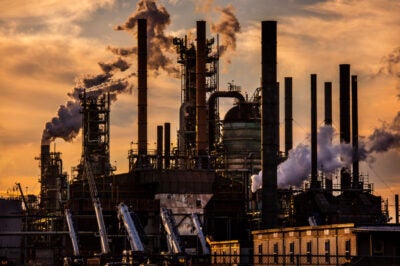Plastic pollution is most often associated with the careless use of plastic bags. Beyond the challenges of litter and recycling, however, plastics production poses a serious threat to climate action.
In this Weekly Data, Energy Monitor showcases research by the Beyond Plastics project at Bennington College in Vermont, US, which shows that the US plastics industry has a significant carbon footprint. In 2020, US plastic production facilities emitted more than 114 million tonnes of CO2 equivalent (CO2e). This is slightly more than the total emissions of Kuwait, one of the world’s most important oil producers (around 3% of the global total).

The high carbon footprint of plastics begins at the very start of their life cycle as they are mainly produced from natural gas and crude oil. Making plastics is a carbon-intensive process that requires the transport and “cracking” of gases from fracking through high-temperature heat to create new molecules.
Beyond Plastics covers all stages of plastics production, including fracking, transport and processing of the base fossil fuels, gas crackers, export and import activities, and so forth. The emissions data comes from the plastics production facilities themselves, as they are required to report this to the US Environmental Protection Agency.
[Keep up with Energy Monitor: Subscribe to our weekly newsletter]
Plastics emissions in the US could add up to an even bigger figure – 232 million tonnes of CO2e per year instead of 114 – argues Beyond Plastics, due to under-reporting of facilities. These totals take into account that certain facilities may be producing other materials and supplying industries beyond plastics.
In the US, most of the plastics production facilities are located along the Gulf Coast and more specifically in the states of Texas and Louisiana. Driving down the carbon emissions of the US plastics industry is necessary to safeguard not only its own future but also to ensure a just transition to net zero across the entire country.
While the US coal industry released a staggering 786 million tonnes of CO2e in 2020, the fuel is on track to disappear from the country's power grid in the next decade in line with achieving President Biden's goal of carbon-free electricity. The plastics industry, on the other hand, continues to build more capacity. Beyond Plastics argues that at this rate, by 2030, the US plastics production industry will almost certainly contribute more to climate change than coal-fired power.



